The How-To's of Organizing
News Based on facts, either observed and verified directly by the reporter, or reported and verified from knowledgeable sources.
(Or how to stop worrying and learn to replace clutter with calm)

Good morning! Today is Wednesday, May 11, and you are reading today’s section of Examiner+, a digital newsmagazine serving Westchester, Putnam, and the surrounding Hudson Valley.
Need to subscribe — or upgrade your Examiner+ subscription to enjoy full access to all of our premium digital content? Take advantage of our special FREE TRIAL OFFER.
Take Examiner+ on a test drive today at NO CHARGE for a full month. Enjoy full membership-level access to all of our premium local content, delivered straight to your inbox six times a week.
Please take our brief Reader Survey to help us serve you better (CLICK HERE or see the link at the end of the story)
Spring organizing season has arrived. This is when an internal clock tells us that it’s time for a home refresh. Or a purge. Or feelings of inadequacy followed by a gin and tonic with lime.
It’s a compulsion that happens to most of us. That’s why home organization articles are popping up like daffodils. And we like daffodils.
So, whether you want to focus on your garden shed, summer clothes section, pool house, or pantry, there are tips and tricks that really do help when you’re tackling ANY space.
If this is the first organizing article you’ve ever come across, there’s a fundamental process you need to know. Not to bog you down with the basics, but here’s a quick overview.
The Method
Step 1. There is a tried and true method that professional organizers use. It’s the way to tackle ALL projects and it starts with the most overwhelming aspect: EVERYTHING MUST COME OUT. (Meaning, if you’re tackling a closet, empty it completely.)
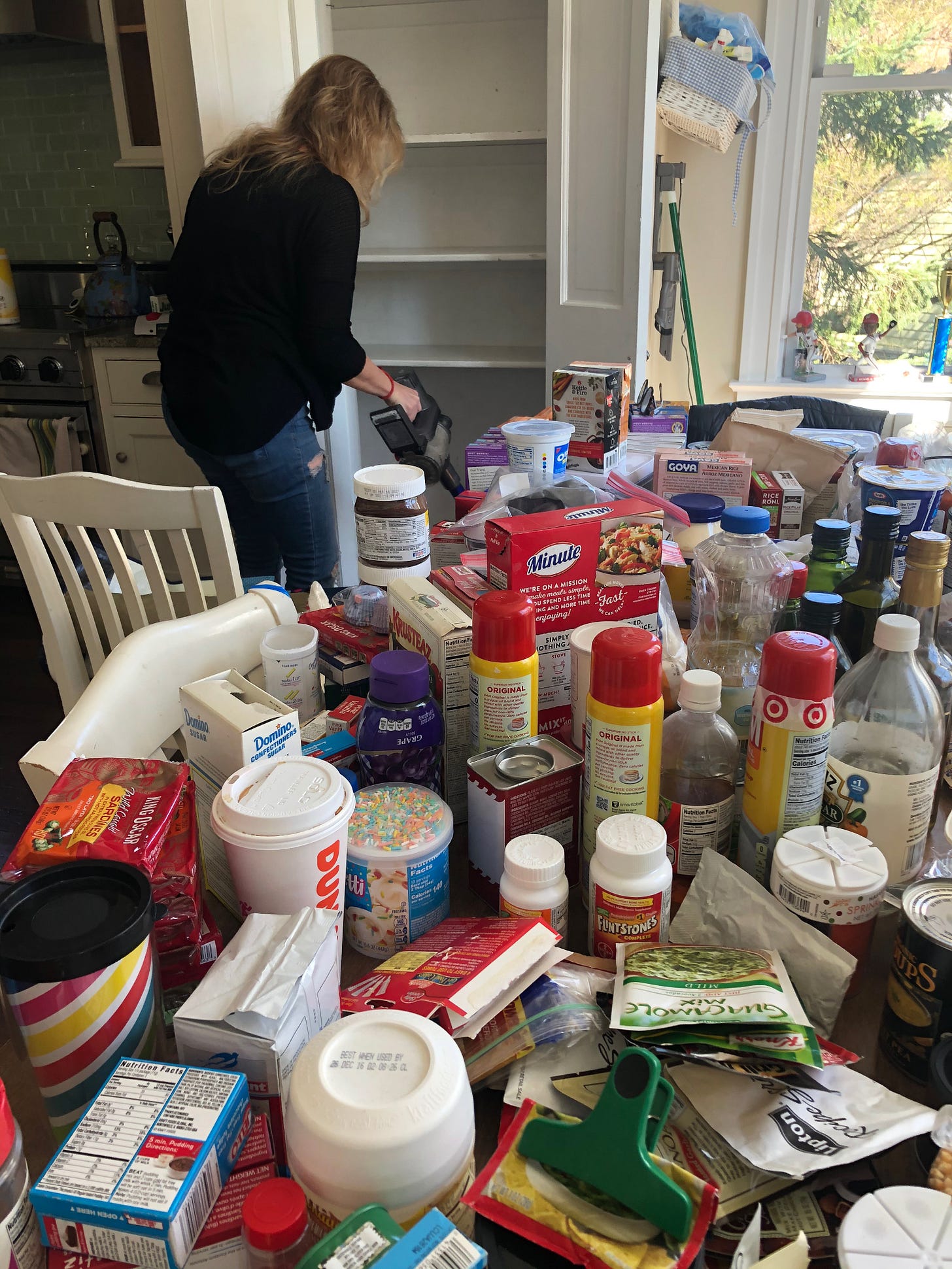
This step is critical for many reasons. You need to break your paradigm of thought about where you’re used to seeing your items. An empty space is full of possibilities.
It is equally important to be able to see everything you have. You’re eliminating mystery. (“I think that purple hat is back there somewhere.”)
If you’re tackling a closet, for example, simply pawing through the clutter to find items you might want to discard won’t give you any real results. Same goes for a drawer, cabinet, pantry, or fridge. Take everything out.
You will now need to take a moment to recover from the regret of ever thinking this was a good idea.
Step 2. As you take everything out, you sort and categorize. (ex: all long-sleeve button-downs in one pile.) This allows you to take stock of the amount you have in each category and plan accordingly. And this is when you realize you have five black turtle necks but for some reason only love wearing three. You know what to do.
Step 3. Get rid of things. Move quick, don’t overthink, and sort into four piles: keep, donate, throw out, and ‘not sure’. (It’s easier to tackle a small pile of ‘not sure’ later than to have those items break your momentum.) In bathrooms and kitchens, expiration dates make this process easier.
Step 4. The fun part (everything is relative, right?) is taking stock of what you have and thinking about the size and method of containment. Yes, we know. You certainly don’t have to buy things in order to organize. (And, ideally, you’re getting rid of stuff, not adding to it.) But … some well-thought-out containment definitely helps. When there is a contained spot for everything and it’s aesthetically pleasing, it helps toward maintenance.
NOTE: While for some it may be tempting to motivate yourself – before you even begin – with a shopping spree at your local Homegoods, resist that urge until after you’ve emptied, purged, and categorized. Otherwise, you risk buying things that may not work or fit. Also, keep uniformity in mind. We’re trying to tame visual clutter. Different colored and sized containers, no matter how pretty, can add to the problem.
Step 5. Finally (and way more important than you may think), label everything. Once you’ve decided where your dental supplies go, slap the word DENTAL on the container somewhere and you won’t believe how that simple last step helps the category stay maintained.
Organizing is really a process of knowing yourself and your family. Try not to think of it as a never-ending cleaning chore. It’s not. It’s a journey of self-discovery. There are systems that can work for any messy idiosyncrasy out there. And there are ways to thwart even your laziest instincts in order to sustain those systems. So, thoughtfully consider your routines, notice what you tend to overbuy and what your family’s current fads are. Are you all about Keto right now or in a weird kombucha phase? Do you buy themed baseball caps wherever you go? Knowing who you are will help you accomplish what you really want… to sort yourself out.
Know Thyself and Embrace It
Sometimes you just need to dump. You can still make a system out of that. Know when to micro and when to macro. Sometimes it’s smarter to dump all your kid’s broken AND full crayons into one big see-through box so they (or you) can just dump them back in at the end of play. But sometimes it’s better to have all the red markers in one section of a fun-to-spin turntable so your child knows exactly where they go and has fun matching colors. You know what will work best. Try that first.
Whether it’s the pile of shoes by your door, the five big boxes of mixed-variety chip bags on sale at Costco that won’t fit nicely on your shelves, or the loungewear you use multiple days in a row that falls in that no-man’s land between not-quite-laundry but not-quite-return-to-drawer status, we all have categories that drive us nuts. Think out of the box and play. Trial and error are part of the process. Maybe that loungewear needs its own little basket so you know where to throw the items when you’re trying to clean off that chair in your room. Or you may ultimately realize the basket doesn’t work because it becomes its own cluttered dumping ground. Try a few S-hooks that you hang on the rod in your closet and hook them there. We’re trying to avoid folding or hanging, right?
Play with Categories and Think in Terms of Stations
Think outside the box – themes can make it fun. If the cocoa doesn’t fit in a drawer with other hot beverages like tea and coffee, maybe make a family fun night station (below) and keep it with the popcorn and those weird taco stands or corn-on-the-cob handles you don’t know what to do with.
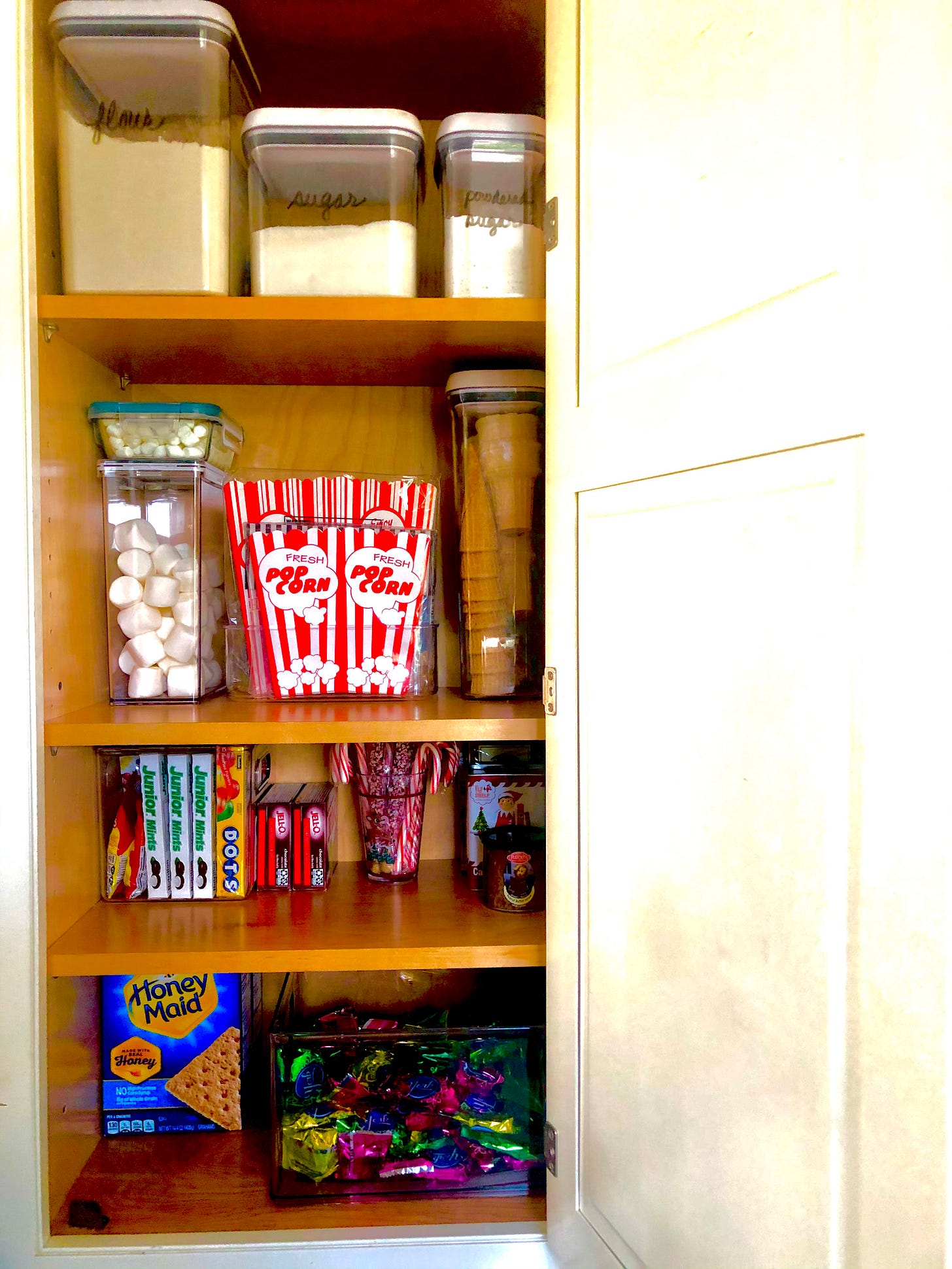
Everything Visible at a Glance
The main reason Marie Kondo is all about the file fold when it comes to clothes is, again, so that everything is visible at a glance and you are not rummaging through a pile to search for the thing you want. You need to be able to locate that pink shirt immediately and pluck it out of your drawer without disturbing a thing. (Take as much time with this process as you like. Thank the shirt for its contribution to your life if that’s what tickles you, but perfection doesn’t need to be the goal.) Fold as sloppily as you normally do, then fold over quickly in thirds and stick it in the drawer vertically, not horizontally (below). It’ll look good regardless and the shirts hold each other up. No need to fuss.
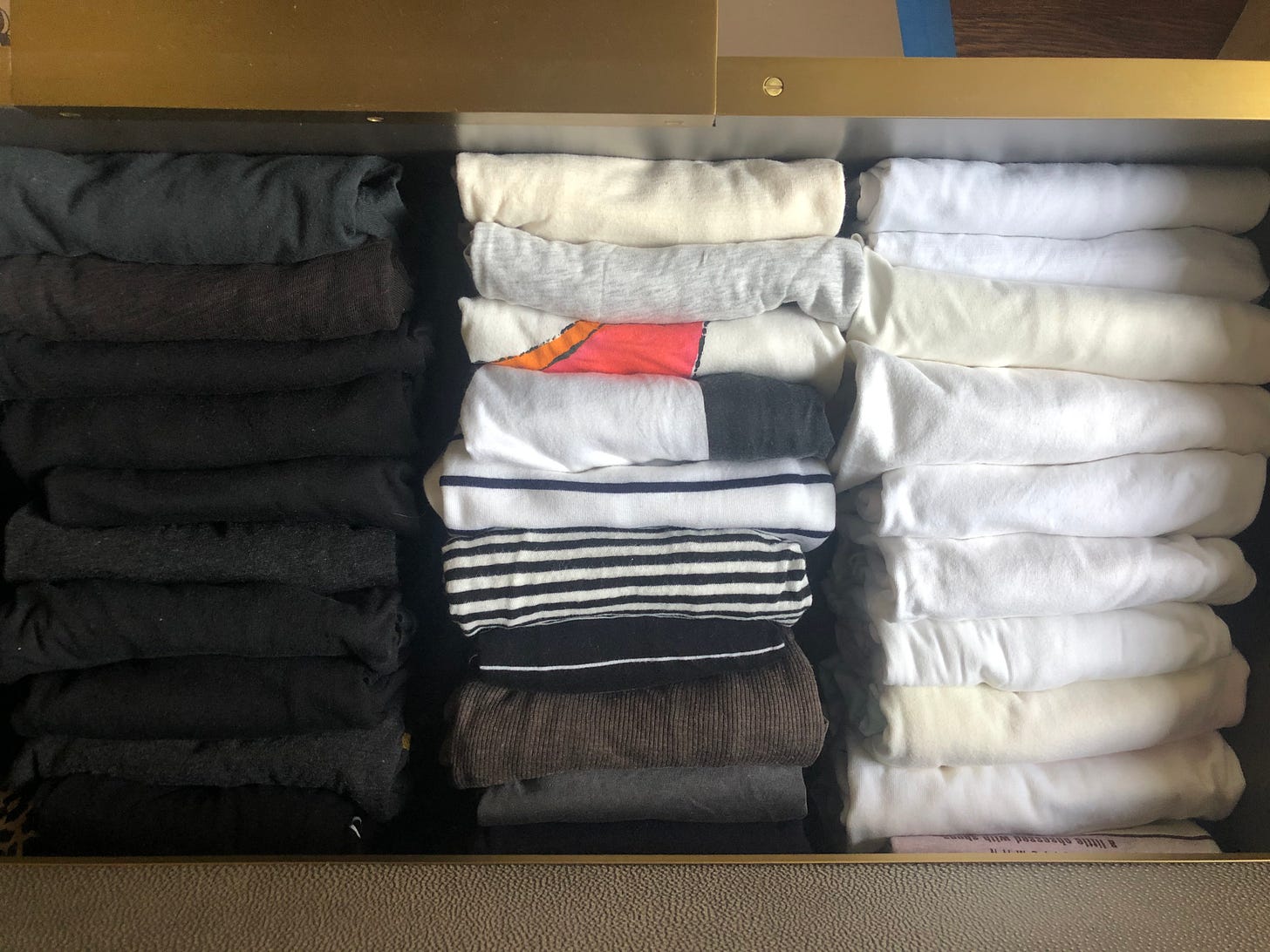
The file method works for so much. Have a ton of paper plates crammed somewhere and can’t find the birthday-themed ones because the Thanksgiving ones and the shamrock ones are obscuring everything else? Grab a cheap wire file stand organizer and stand them up vertically (below). You can see every plate at a glance, no need to rummage and it looks satisfying.
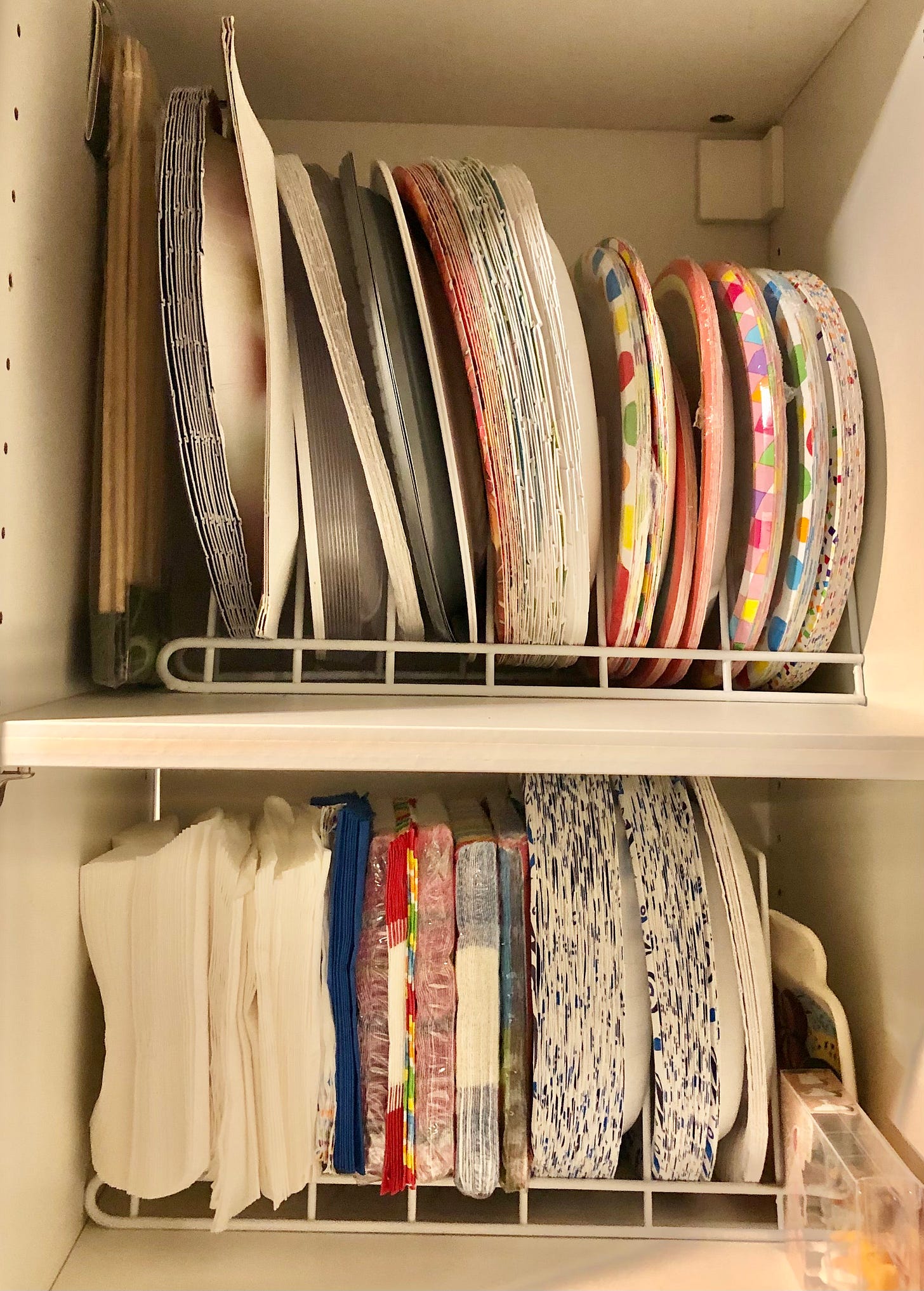
Same thing with party or gift bags (below). They look pretty and you can see what you have at a glance.
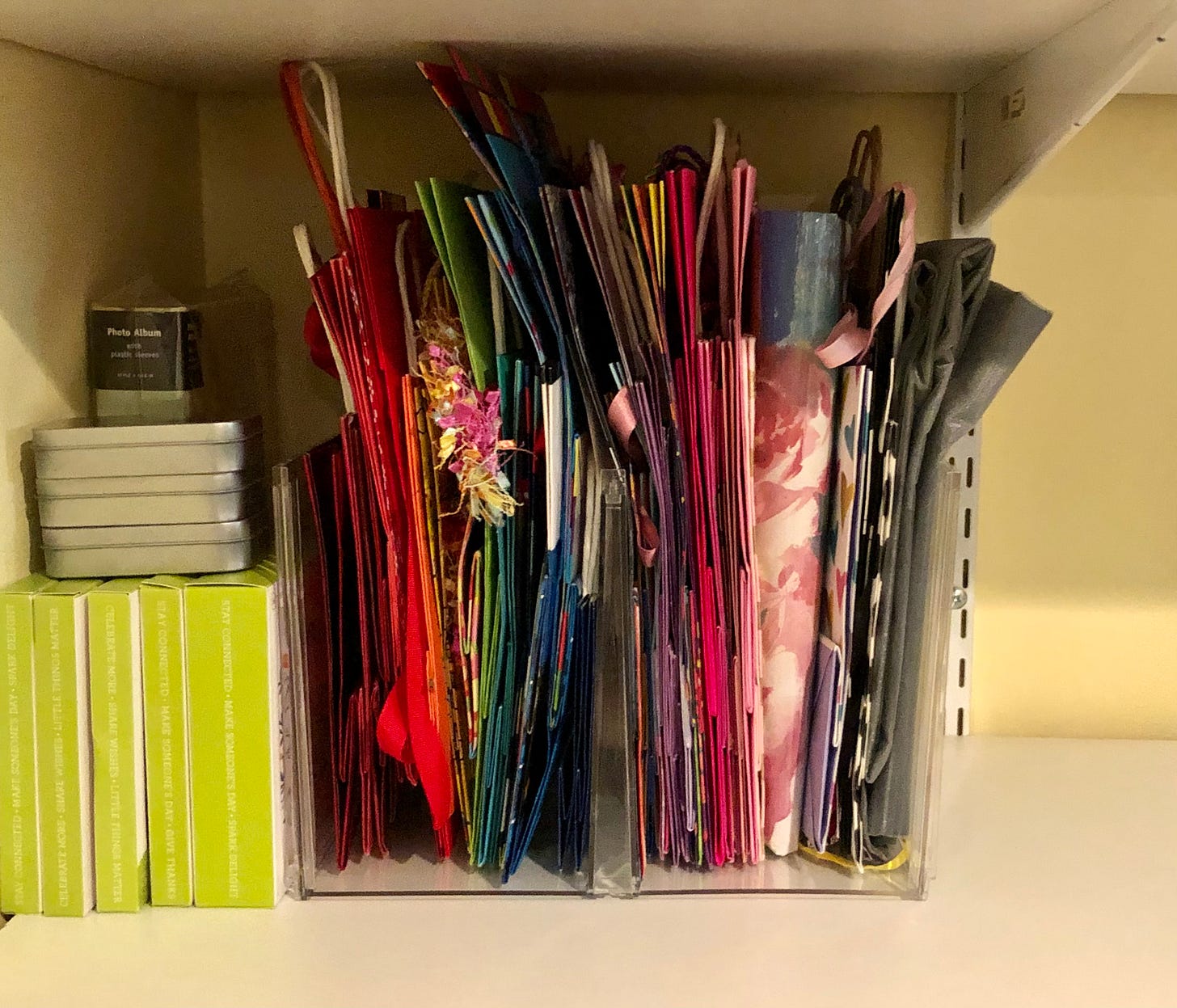
Turntables cannot be underestimated. In any cupboard where you would be reaching for an item, or where a gaggle of items will be floating around, turntables are game-changing. With a flick of the finger, the product you desire appears front and center where you need it. They’re perfect for corner space, under the sink (below), and work brilliantly for oils and vinegars.
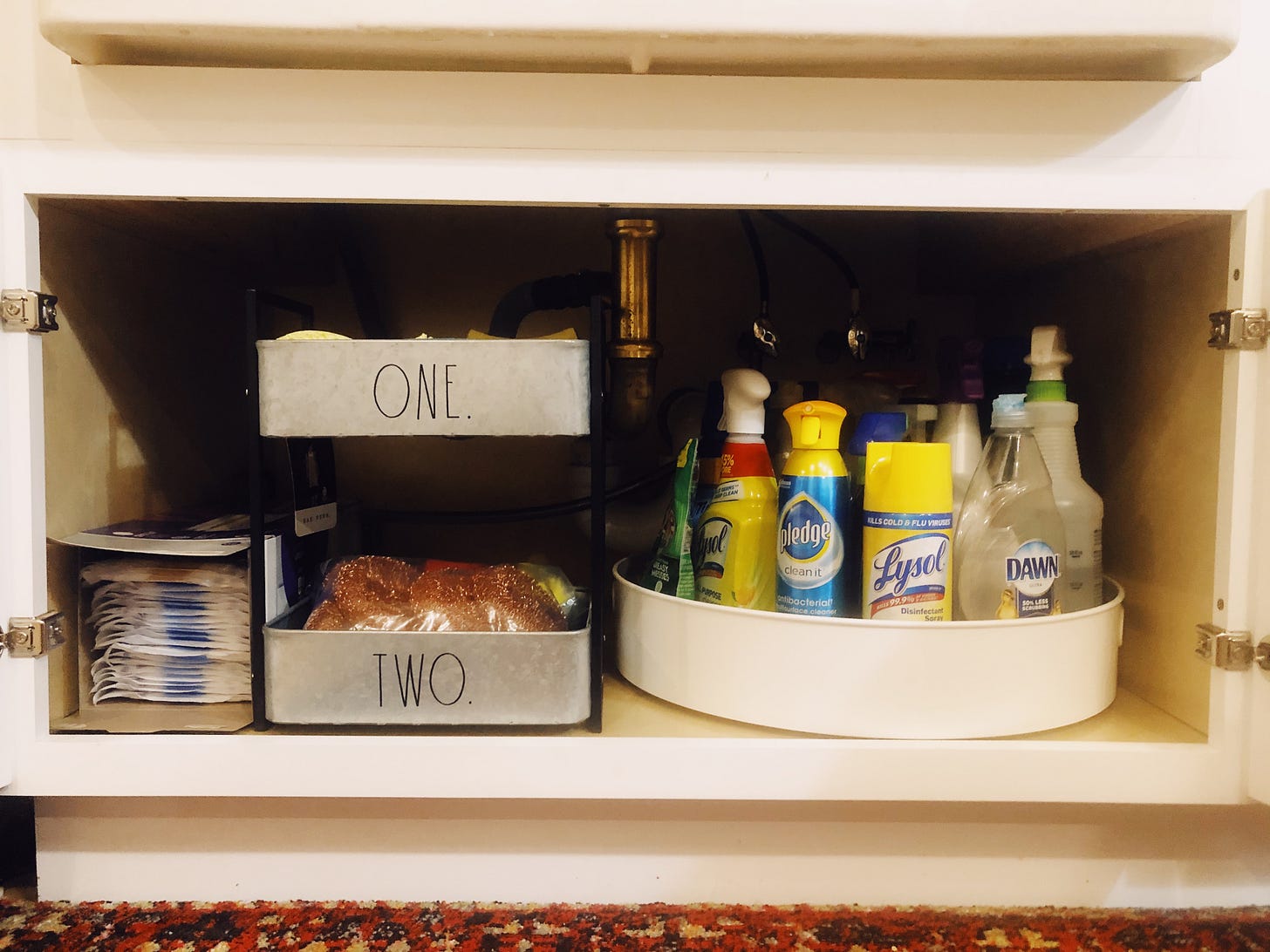
Unpackage and Decant — But Make it Work for You
This can be controversial but hear us out. Unpackaging:
In closets, this can often take the form of taking all the plastic dry cleaning bags off everything. Protecting clothes with them has been the conventional wisdom since forever, so you’re forgiven. But take them off now. Clothes need to breathe and plastic attracts dust and the very creatures you’re trying to deter: moths.
Just because the box something came in is modular and stacks, keeping most packaging on rarely works for pantries (though it does for backstock, see below.) You want to get rid of the incredible amount of bulk that packaging adds to your space and make it easier to get in and out with the item you need. This is all about the grab and go, people! That little hole you tore in the top of your granola bar box not only looks messy but it’s hard to access. When you return from your market run, rip open the top of that sucker and dump it into a big see-through container with all the other brands of bars. Now they’re all in one place, easy to get at and they look pretty cool too.
Decanting. You’ve got to admit it, decanted cereals look attractive. But this step can be too much for some. Try picking the items that you go through either super quickly or very rarely. Not in between. For example, in our house, we can barely keep up with our almond consumption. No matter what brand of almonds we buy they get dumped together in one container that we can grab when we want to snack. But our pantry isn’t overrun by all the bags and tins we buy. On the other end of the spectrum, if you don’t use a ton of cane sugar, for example, but need it on hand for guests who like sugar with their coffee, dump the beautiful white granules into a decanter, stick some masking tape on the bottom and write the expiration date. It looks way better than the bag that won’t close right.
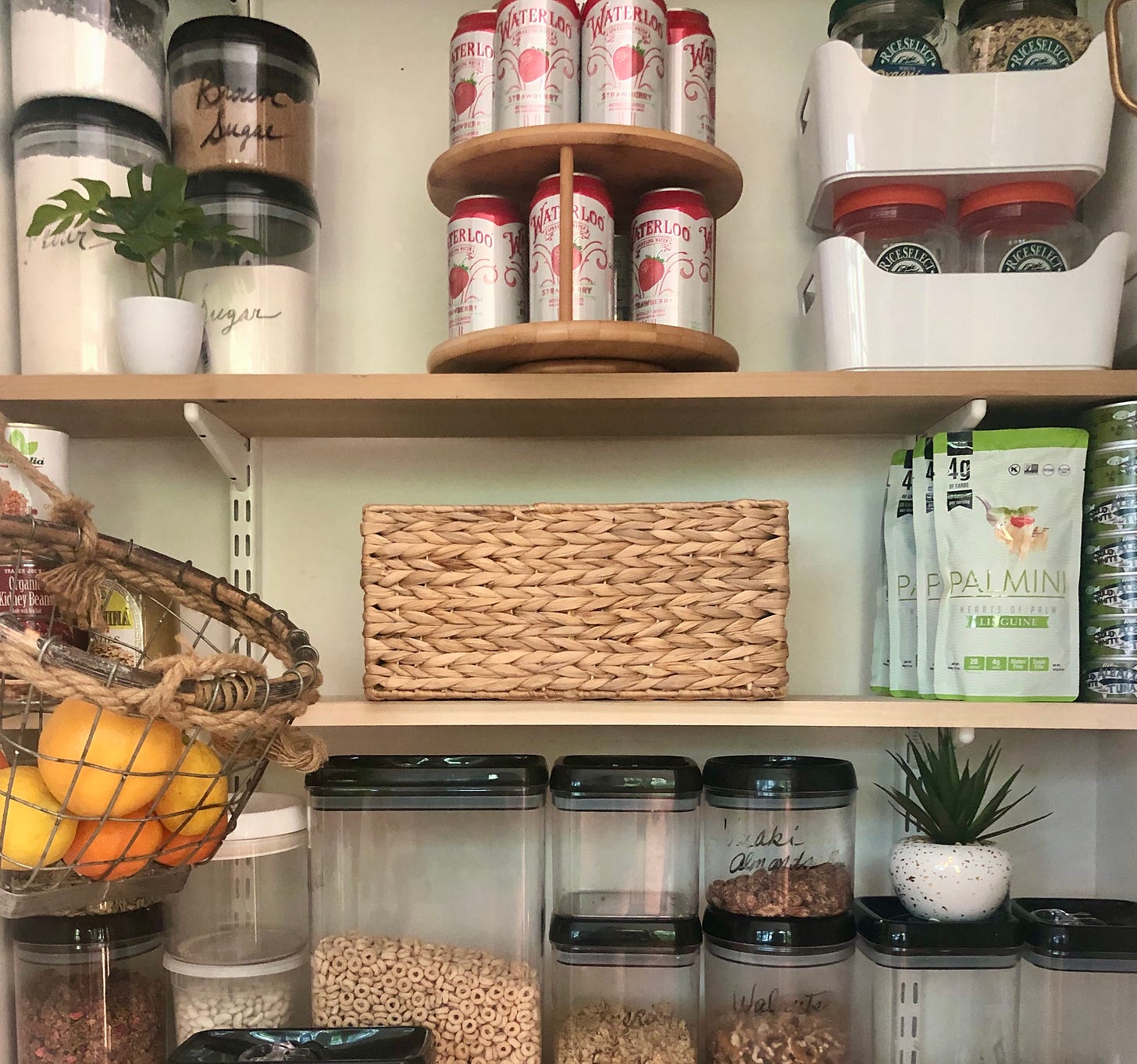
Our last piece of advice is to embrace the concept of backstock. Try to find a separate place for extra bulk. Whether it be in a hidden stairwell or a rack in the basement or garage. One big bag of toilet paper is great to keep in your bathroom closet (if you unpackage it!) but the other five big bags should go into a backstock area.
And if all of this is just too overwhelming, it’s fine to just start slicing limes.
Jena A. Butterfield is a lifestyle writer specializing in food, drink, travel, and interior design. Whether she’s traveling or not, she can usually be found washing down a hunk of cheese with a glass of Nebbiolo. A native of the land of Quahogs and chowdah, she lives with her husband and son in New York, where she is also a professional home organizer (www.nyboxbin.com).
TELL US WHAT YOU THINK! TAKE OUR BRIEF READER SURVEY NOW
Please help us serve you better by completing this brief, four-minute survey.
We’d love to know your thoughts and opinions on what you like, what you’d like to read more about, and how we can do better.
CLICK HERE to take our survey or visit
www.surveymonkey.com/r/ExaminerPlus
Examiner Media is a proud participant in The Trust Project.
CLICK HERE to review our best practices and editorial policies.
We welcome corrections, story ideas, and general feedback. CLICK HERE to use our actionable feedback form.

Examiner Media – Keeping you informed with professionally-reported local news, features, and sports coverage.


